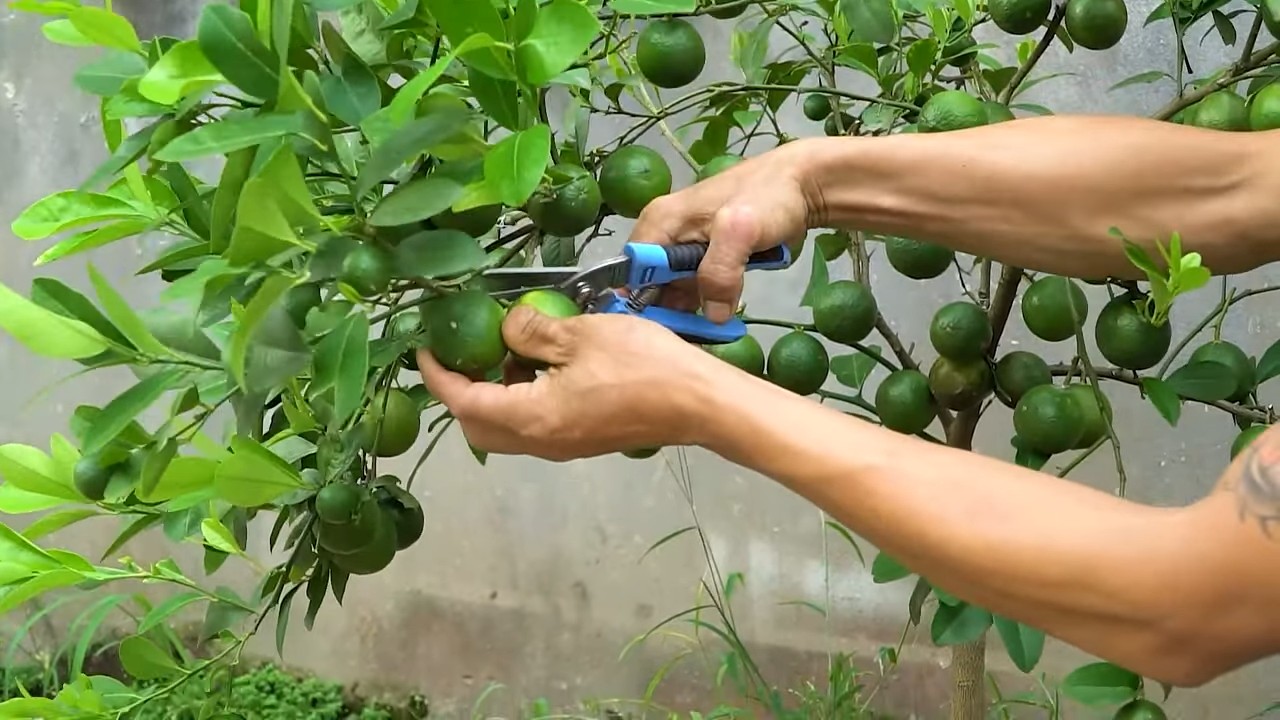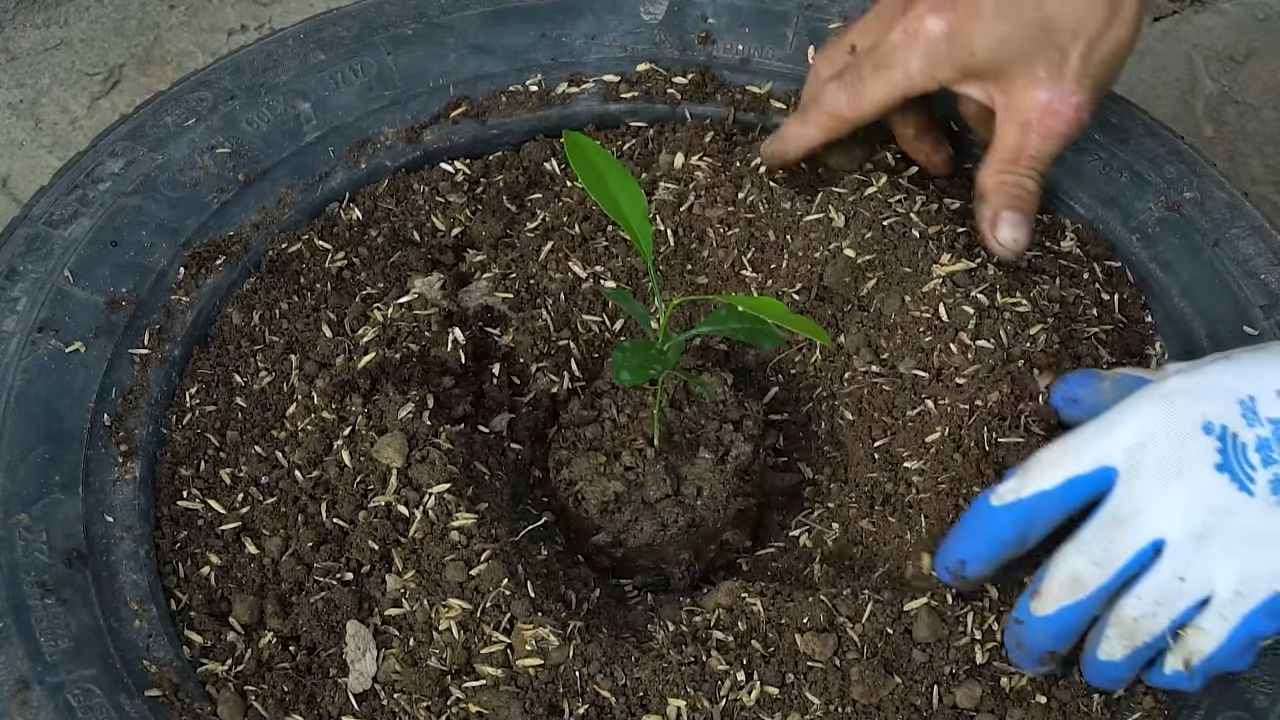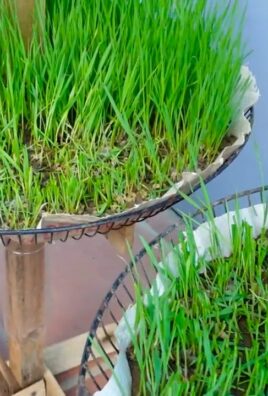Growing lemons indoors might seem like a far-fetched dream, especially if you don’t live in a sunny citrus grove. But guess what? It’s totally achievable, and I’m here to show you how! Forget those expensive, sometimes lackluster lemons from the grocery store. Imagine plucking your own juicy, fragrant lemons right from your living room – the zest possibilities are endless!
For centuries, cultivating citrus in controlled environments has been a mark of ingenuity. From the elaborate orangeries of European royalty to the simple windowsill gardens of today, the desire to bring the sunshine indoors has always been strong. There’s something incredibly satisfying about nurturing a plant and reaping its rewards, especially when that reward is a tangy, vitamin C-packed lemon.
Why should you try growing lemons indoors? Well, beyond the sheer joy of it, it’s a fantastic way to add a touch of green to your home, purify the air, and have a readily available supply of fresh lemons for cooking, baking, or even just a refreshing glass of lemonade. Plus, it’s a fun and rewarding project that anyone can tackle, regardless of their gardening experience. So, let’s dive into some simple DIY tricks and hacks that will have you harvesting your own indoor lemons in no time!

Growing Lemons at Home: Your Guide for an Indoor Lemon Grove
Hey you! Have you ever dreamed of harvesting your own sun-ripened lemons, right in the middle of winter? Sounds crazy, right? But it’s absolutely doable! I’ll show you how you can grow lemons in your own four walls. It’s a bit of work, but the scent of lemon blossoms and the joy of your own harvest are totally worth it. Let’s get started!
What you need: The Ingredients for Your Lemon Success
Before we get started, here’s a list of everything you’ll need. Don’t worry, you probably already have most of it at home or can easily get it at a garden center.
- Lemon seeds: Preferably from organic lemons, as these are often untreated.
- Seed starting mix: Special soil for starting seedlings is ideal, as it is low in nutrients and loose.
- Small starter pots: Peat-free pots are great because you can simply repot the small seedlings later without damaging the roots.
- Mini-greenhouse or plastic wrap: To ensure high humidity.
- Spray bottle: For watering.
- Planting pots (for later): Larger pots with good drainage for when the seedlings grow bigger.
- Citrus potting mix: Special soil for citrus fruits that contains all the important nutrients.
- Fertilizer for citrus plants: For an optimal supply of nutrients.
- A bright windowsill or grow light: Little lemon trees need a lot of light!
- Patience: Growing lemons takes time and love!
Step-by-Step Guide: From Seed to Plant
Now let’s get down to it! Follow these steps, and soon your own little lemon plants will be sprouting.
1. Preparing the Seeds:
- Remove the seeds: Cut open a ripe organic lemon and take out the seeds. Choose the plumpest and healthiest-looking seeds.
- Clean: Rinse the seeds under running water to remove any fruit pulp.
- Nicking (optional): Carefully nick the hard seed coat with a knife or a nail file. This helps the seedling to break through more easily. But be careful not to damage the seed itself!
- Soak: Place the seeds in a glass of lukewarm water for 24 hours. This softens the coat and speeds up germination.
2. Sowing:
- Prepare the pots: Fill the starter pots with seed starting mix. Lightly press the soil down.
- Sow the seeds: Place 2-3 seeds in each pot, about 1-2 cm (0.5-1 inch) deep. This increases the probability that at least one seed will germinate.
- Cover: Cover the seeds with a thin layer of soil.
- Water: Gently moisten the soil with the spray bottle. The soil should be damp, but not wet.
3. Germination:
- Mini-greenhouse: Place the pots in a mini-greenhouse or cover them with plastic wrap. This provides high humidity, which is important for germination.
- Location: Place the mini-greenhouse in a warm and bright spot, but not in direct sun. A temperature of 20-25°C (68-77°F) is ideal.
- Ventilate: Ventilate the mini-greenhouse or remove the plastic wrap regularly to prevent mold growth.
- Moisture: Keep the soil moist, but not wet. Spray it with the spray bottle as needed.
- Patience: Germination can take a few weeks, sometimes even months. So don’t give up right away!
4. Caring for the Seedlings:
- Light: As soon as the first seedlings appear, they need a lot of light. Place them on a bright windowsill or use a grow light.
- Watering: Water the seedlings regularly, but avoid waterlogging. The soil should always be slightly moist.
- Fertilizing: Start fertilizing after a few weeks. Use a special fertilizer for citrus plants and follow the dosage instructions.
- Thinning: If several seedlings have grown in one pot, thin them out as soon as they are large enough. Choose the strongest seedling and carefully remove the others.
Repotting: A New Home for Your Lemon Plant
When your little lemon plants have grown larger, it’s time to repot them into bigger pots.
1. Preparation:
- Choose pots: Select pots that are slightly larger than the previous ones. Make sure they have holes in the bottom so water can drain out.
- Prepare soil: Fill the new pots with citrus potting mix.
2. Repotting:
- Carefully remove the plant: Gently take the lemon plant out of the old pot. Try to damage the roots as little as possible. If you used peat pots, you can simply place the plant with the pot into the new pot.
- Planting: Place the plant in the new pot and fill it up with soil. Lightly press the soil down.
- Watering: Water the plant thoroughly after repotting.
3. Aftercare:
- Location: Place the plant in a bright and warm spot.
- Watering: Water the plant regularly, but avoid waterlogging.
- Fertilizing: Fertilize the plant regularly with a special fertilizer for citrus plants.
Proper Care: Keeping Your Little Lemon Tree Happy
Proper care is the key to a healthy and productive little lemon tree. Here are a few tips:
Overwintering: In winter, you should place the plant in a cool and bright location. Water less and do not fertilize.
Light: Little lemon trees need a lot of light, at least 6-8 hours per day. If you don’t have enough natural light, use a grow light.
Temperature: The ideal temperature for little lemon trees is between 18 and 25°C (65-77°F). In winter, the temperature should not fall below 10°C (50°F).
Watering: Water the plant regularly, but avoid waterlogging. The soil should always be slightly moist. Water less in winter.
Fertilizing: Fertilize the plant regularly with a special fertilizer for citrus plants. Follow the dosage instructions.
Humidity: Little lemon trees like high humidity. Spray the leaves regularly with water or place the plant on a saucer with water and pebbles.
Pruning: Prune the plant regularly to keep it in shape and encourage fruit production. Remove dead or diseased branches.

Conclusion
So, there you have it! Growing lemons indoors might seem like a challenge reserved for seasoned gardeners, but with a little know-how and the right approach, you can absolutely cultivate your own miniature citrus orchard right inside your home. This DIY trick isn’t just about having fresh lemons at your fingertips; it’s about the joy of nurturing a living thing, the satisfaction of watching it thrive, and the unique aroma that fills your home with a touch of sunshine, even on the gloomiest days.
Why is this a must-try? Beyond the obvious benefit of having a readily available supply of fresh, organic lemons, growing your own lemon tree offers a therapeutic experience. The act of tending to your tree, observing its growth, and anticipating the harvest can be incredibly rewarding. Plus, think of the bragging rights! Imagine serving homemade lemonade made with lemons you grew yourself. It’s a conversation starter and a testament to your green thumb (or soon-to-be green thumb!).
But the benefits don’t stop there. Indoor lemon trees can also improve your indoor air quality. They naturally filter out toxins and release fresh oxygen, creating a healthier and more pleasant living environment. And let’s not forget the aesthetic appeal. A vibrant, green lemon tree adds a touch of elegance and natural beauty to any room.
Looking for variations? Consider experimenting with different lemon varieties. Meyer lemons are a popular choice for indoor growing due to their smaller size and sweeter flavor. Eureka lemons are another excellent option, known for their classic tartness. You can also try grafting different citrus varieties onto a single rootstock for a truly unique and diverse indoor citrus collection.
Another variation involves the type of container you use. While terracotta pots are a classic choice, consider using self-watering planters to simplify the watering process and ensure your tree receives consistent moisture. You can also explore using grow bags, which are lightweight and breathable, promoting healthy root development.
Don’t be afraid to get creative with your soil mix. While a standard potting mix will work, you can enhance it by adding perlite for improved drainage, coconut coir for moisture retention, and compost for added nutrients. Experiment with different ratios to find the perfect blend for your lemon tree.
Finally, consider adding companion plants to your lemon tree’s pot. Herbs like basil, thyme, and rosemary can help repel pests and attract beneficial insects, creating a healthier and more balanced ecosystem for your tree.
Ready to embark on your indoor lemon-growing adventure? We encourage you to give this DIY trick a try. Start small, be patient, and don’t be afraid to experiment. The rewards are well worth the effort.
And most importantly, we want to hear about your experience! Share your photos, tips, and challenges in the comments below. Let’s create a community of indoor lemon growers and learn from each other. Together, we can transform our homes into thriving citrus oases. We are confident that with the right care and attention, you’ll be enjoying homegrown lemons in no time. Remember, successful **growing lemons indoors** is within your reach!
Frequently Asked Questions (FAQ)
What is the best type of lemon tree to grow indoors?
Meyer lemon trees are generally considered the best option for indoor growing due to their smaller size, tolerance of indoor conditions, and sweeter, less acidic fruit. Eureka lemon trees are another viable option, although they may require more pruning to maintain a manageable size. Consider your space and desired flavor profile when making your choice.
How much sunlight does an indoor lemon tree need?
Lemon trees require at least 6-8 hours of direct sunlight per day to thrive. If you don’t have a south-facing window that provides sufficient sunlight, you may need to supplement with a grow light. Position the grow light about 12-18 inches above the tree and use it for 12-16 hours per day. Rotate the tree regularly to ensure all sides receive adequate light.
What type of soil is best for an indoor lemon tree?
Lemon trees prefer well-draining, slightly acidic soil. A good potting mix for indoor lemon trees consists of equal parts potting soil, perlite, and peat moss or coconut coir. The perlite improves drainage, while the peat moss or coconut coir helps retain moisture. Avoid using garden soil, as it can be too heavy and compact for container growing.
How often should I water my indoor lemon tree?
Water your lemon tree when the top inch of soil feels dry to the touch. Water thoroughly until water drains out of the bottom of the pot. Avoid overwatering, as this can lead to root rot. During the winter months, when the tree is not actively growing, you may need to water less frequently. Check the soil moisture regularly and adjust your watering schedule accordingly.
How often should I fertilize my indoor lemon tree?
Fertilize your lemon tree every 2-4 weeks during the growing season (spring and summer) with a balanced citrus fertilizer. Follow the instructions on the fertilizer label for proper dosage. Reduce or stop fertilizing during the winter months when the tree is dormant. Look for fertilizers specifically formulated for citrus trees, as they contain the necessary micronutrients for healthy growth and fruit production.
How do I prune my indoor lemon tree?
Prune your lemon tree in late winter or early spring before new growth begins. Remove any dead, damaged, or diseased branches. Prune to maintain a desired shape and size. You can also prune to encourage branching and fruit production. Use clean, sharp pruning shears to make clean cuts. Avoid removing more than one-third of the tree’s foliage at a time.
What are common pests and diseases that affect indoor lemon trees?
Common pests that affect indoor lemon trees include aphids, spider mites, scale, and mealybugs. Regularly inspect your tree for signs of infestation. Treat infestations with insecticidal soap, neem oil, or horticultural oil. Common diseases include root rot, citrus canker, and fungal infections. Prevent diseases by providing proper drainage, good air circulation, and avoiding overwatering.
How do I encourage my indoor lemon tree to fruit?
To encourage your lemon tree to fruit, ensure it receives adequate sunlight, water, and fertilizer. You may also need to hand-pollinate the flowers if you don’t have bees or other pollinators indoors. Use a small paintbrush to transfer pollen from one flower to another. Provide a period of cooler temperatures (around 50-60°F) during the winter months to encourage dormancy and promote flowering in the spring.
Why are the leaves on my indoor lemon tree turning yellow?
Yellowing leaves can be a sign of several problems, including overwatering, underwatering, nutrient deficiency, or pest infestation. Check the soil moisture and adjust your watering schedule accordingly. Fertilize your tree with a balanced citrus fertilizer to address nutrient deficiencies. Inspect the tree for pests and treat accordingly. If the problem persists, consult with a local nursery or gardening expert.
Can I move my indoor lemon tree outdoors during the summer?
Yes, you can move your indoor lemon tree outdoors during the summer months, but do so gradually to avoid shocking the tree. Start by placing the tree in a shaded location for a few days, then gradually move it to a sunnier spot. Ensure the tree is protected from strong winds and extreme temperatures. Bring the tree back indoors before the first frost.





Leave a Comment